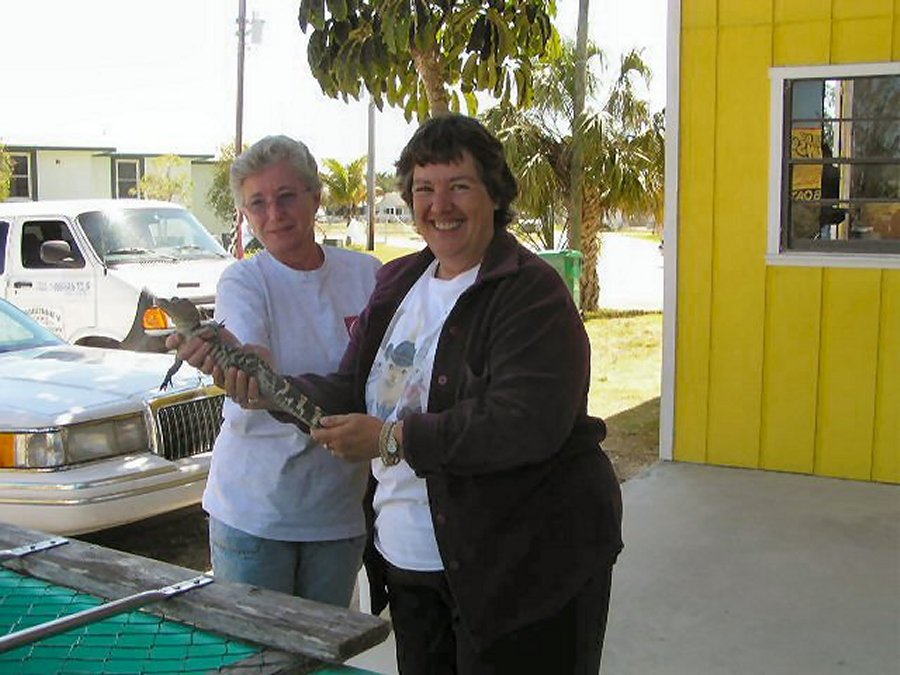
Nancy wrestling an alligator. |

Here we are ready for a speedy ride. |
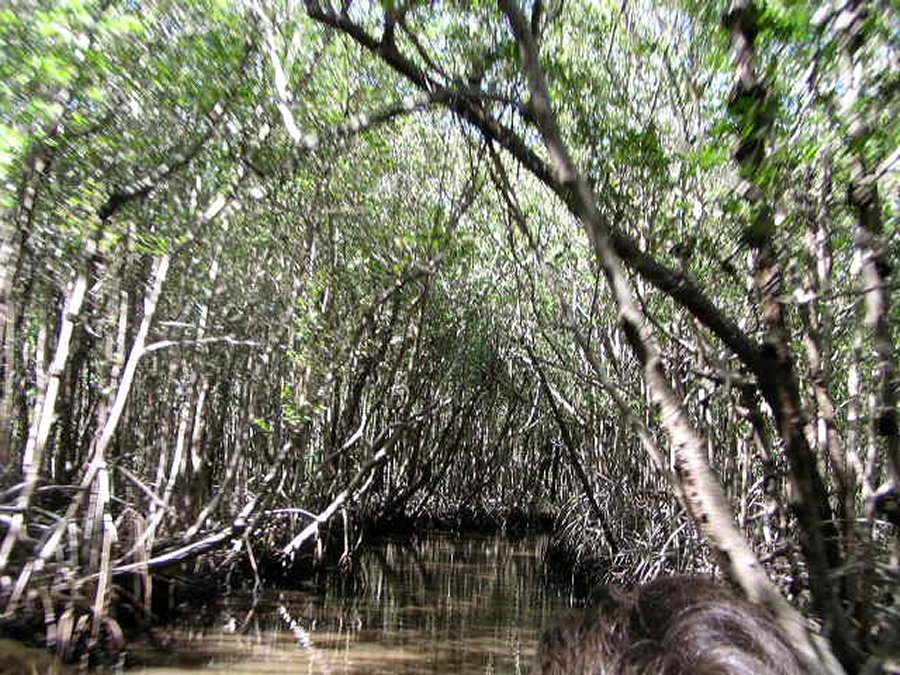
We roar through the mangroves. |

Then we burst out into the open water. |
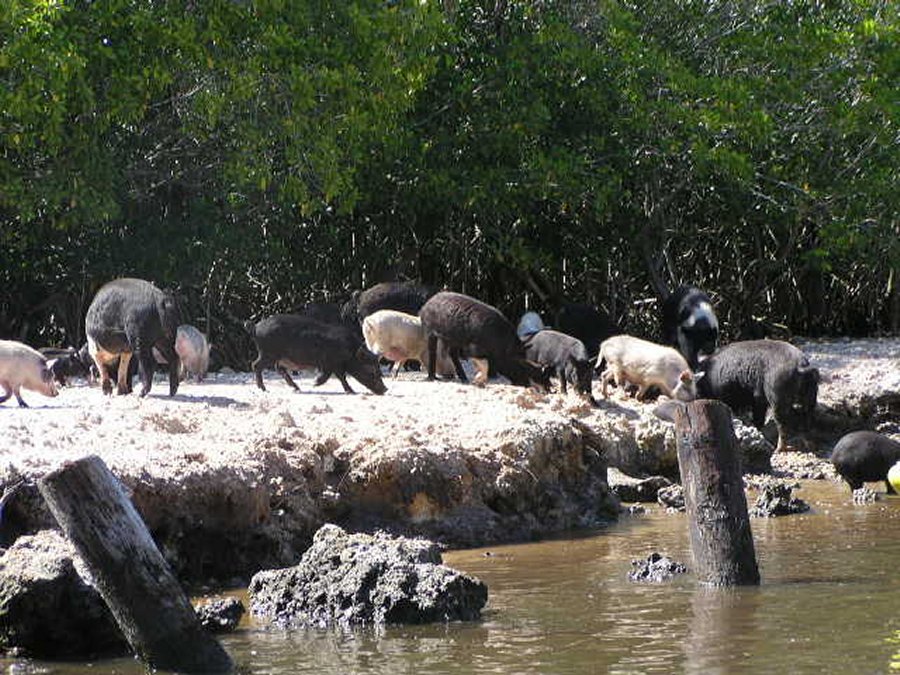
The driver slows down so we can check out the pigs on this island. |

If I was driving out here I would probably get lost in all the mangrove canals. |
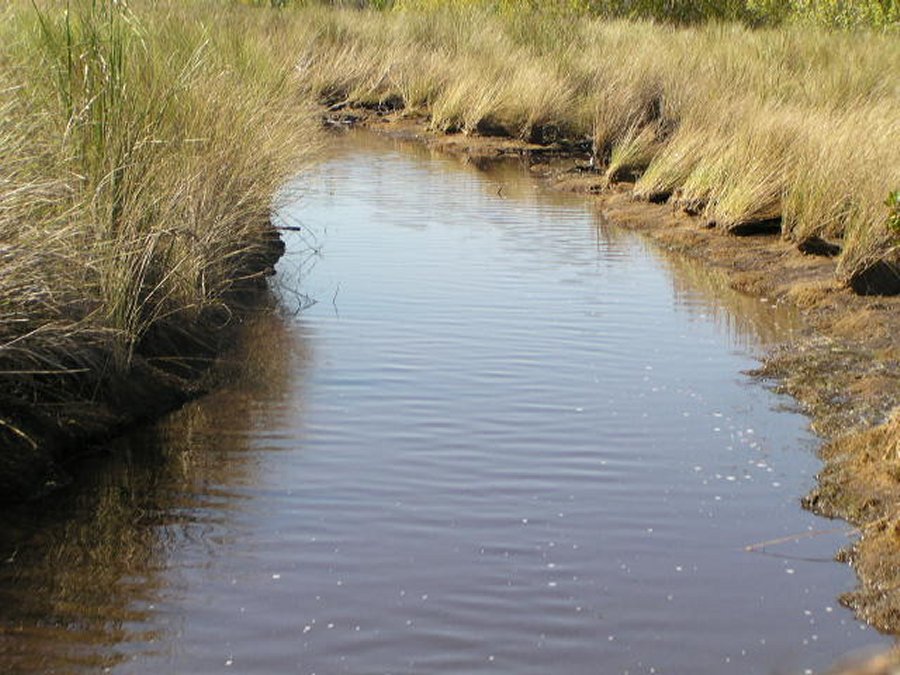
We then slip and slide through the grasslands. |
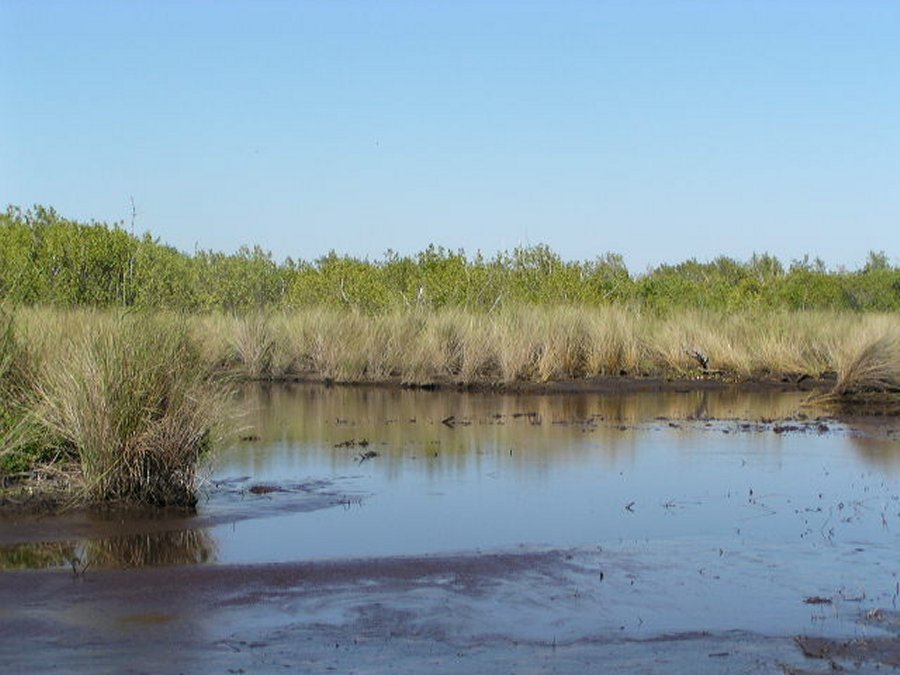
This water can't be more than a couple inches deep. |

The driver feeds this alligator marshmallows. |
Airboats are not allowed in Everglades National
Park or Big Cypress National Preserve. The ranger also tells us not to harass the wildlife and stay 15 feet
back from the alligators. Even thought the Everglades look flat, the ranger says, they are not. There is a
25-foot brume that separates the Everglades and causes a river like flow of water from Lake Obeechobee into
Florida Bay(1 X 2 miles around and 10 feet deep) and the Gulf of Mexico. The water flows at the rate of 7
miles in 34 days, not exactly a rushing river. The Everglades only have two seasons, wet and dry. Wet season
is summer with over 60 inches of rain, and dry season is tourist season or winter. The Everglades also have
what they call hammocks. One is just 4 to 6 inches above the ground and supports vegetation that doesn't like
to live in the water but likes its roots in the water. The Hardwood Hammock is 3 to 4 feet above the ground
and supports trees that like dry ground, the deer and other animals also like Hardwood Hammocks. |
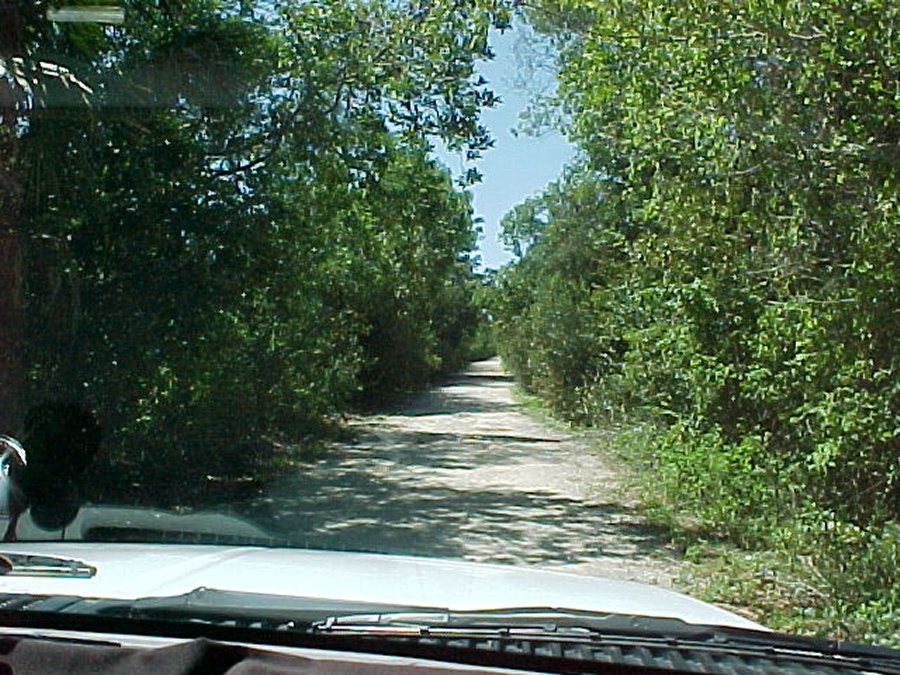
We drove about half way on the 26 mile loop road in the Big Cypress National Preserve. |
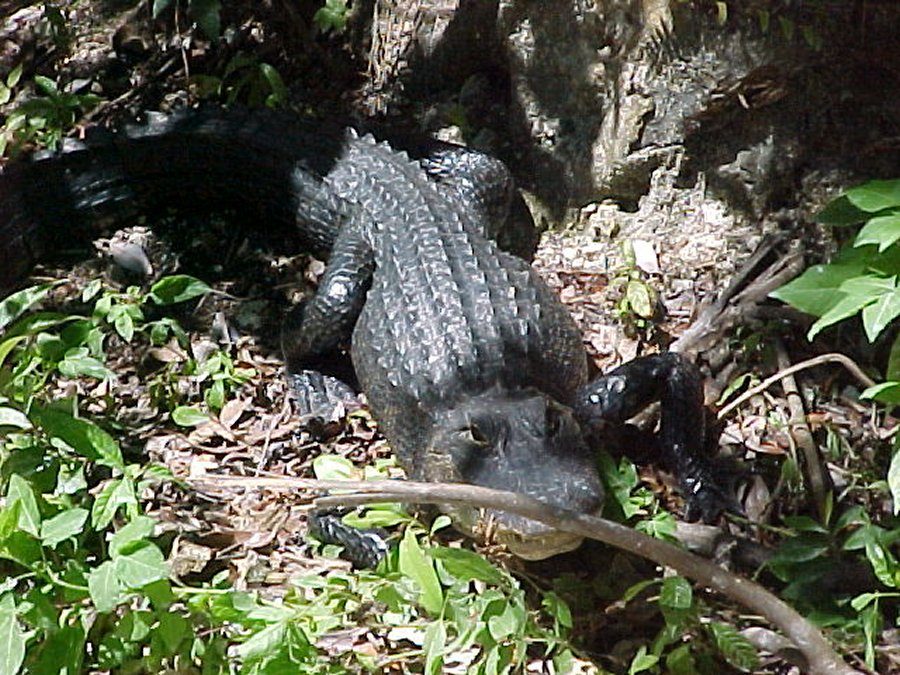
We encountered lots of alligators in the wild. This one is right next to the road. |
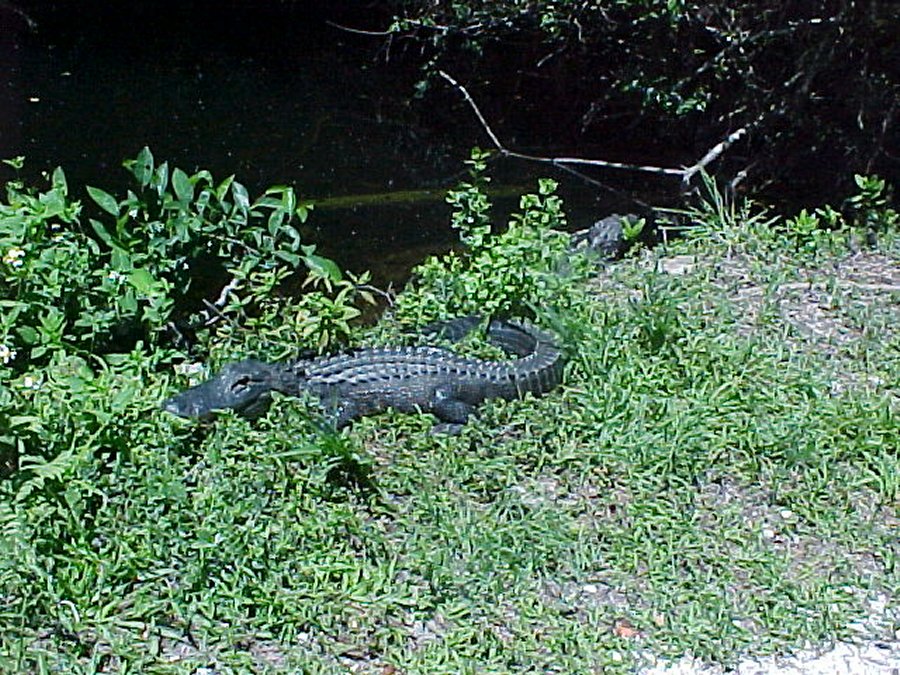
Here are a couple in the canal. There are also Otter and lots of birds on this road. |
| Shark Valley borders Big Cypress Preserve
and is the first stop on the Tamiami Trail (Hwy 41) in Everglades National Park. There is a wildlife
viewing tram tour through saw grass prairies including a stop at the 65 foot tower for an overview of
the valley. The water flow used to come from Lake Obeechobee, but since the development of farms and
housing, freshwater flowing into the park is engineered. With the help of pumps, floodgates, and retention
ponds along the park's boundary. The Everglades are presently on life support, alive but diminished.
There is a 35 year restoration plan in effect to restore the Everglades before they die altogether. |

Shark Valley welcome sign. |

Higher ground in the Everglades are called hammocks. This one is 6 to 8 inches above ground level and has green trees on it. |

This one is called a Hardwood Hammock and is 2 to 3 feet above ground level. It supports trees that like higher dry ground. |

Here is a white Ibis in one of the many ponds. |

This is the first Great White Heron we have seen. We have been looking for one in several preserves for two years. |

Turtles and Blue herons are common through the park along with gators. |

This is a panoramic picture of Shark Valley from atop the 65 foot observation tower. There is a huge pond with lots of trees and wild life. |
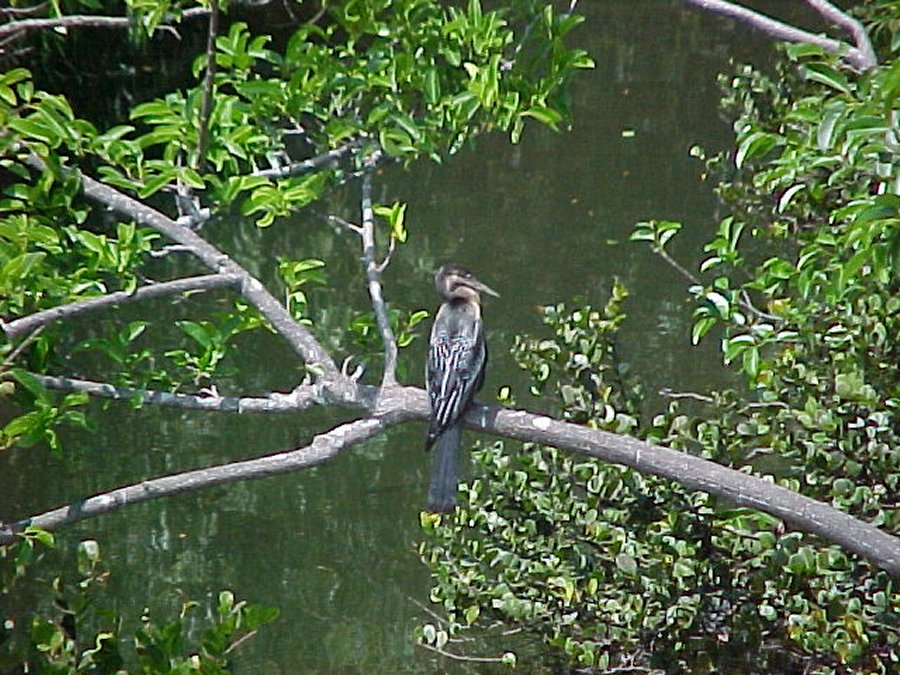
This is a Anhinga. |
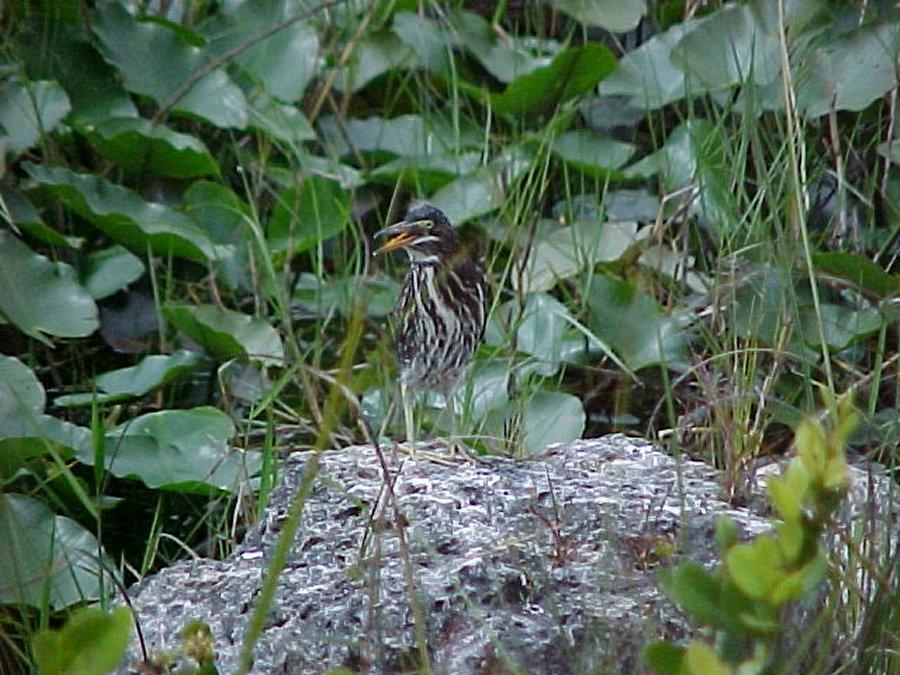
Here is a baby Green Heron. |
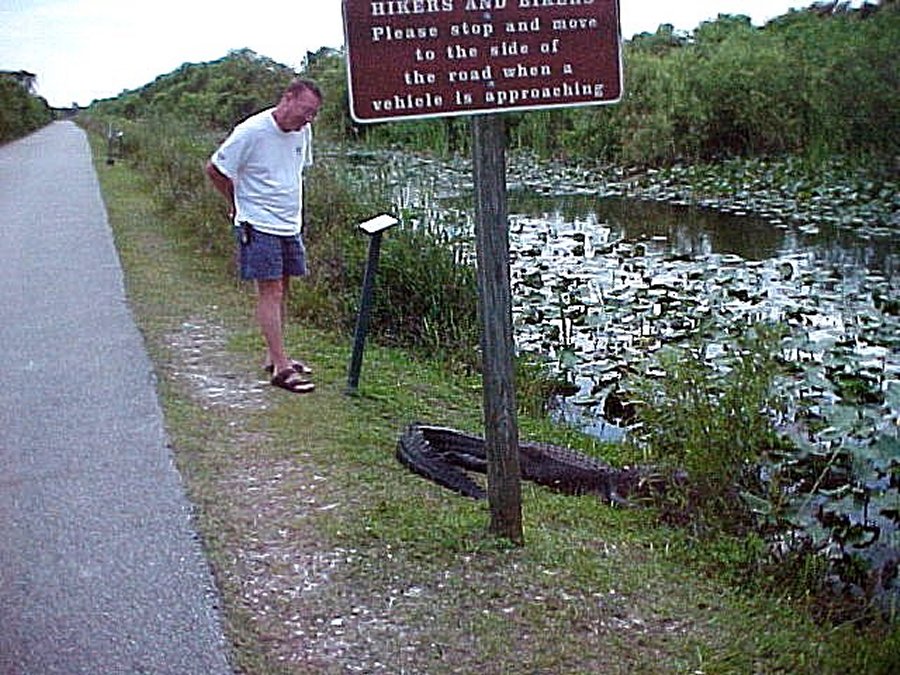
David wants gator bites for supper. |
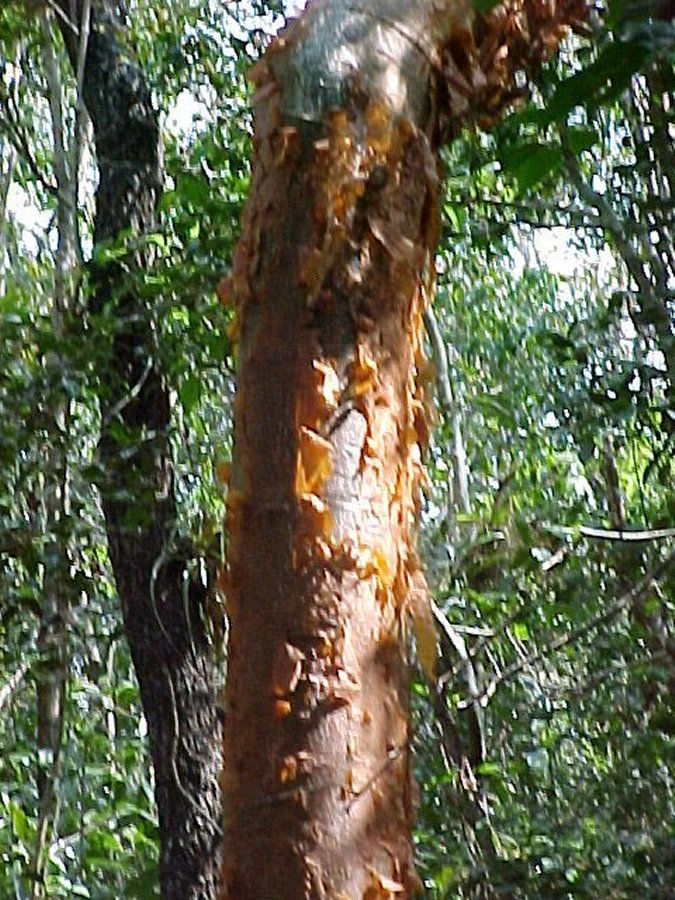
In the hardwood hammock lives the Gumbo Limbo tree also called the tourist tree because it has red bark peals like a sunburned tourist. |
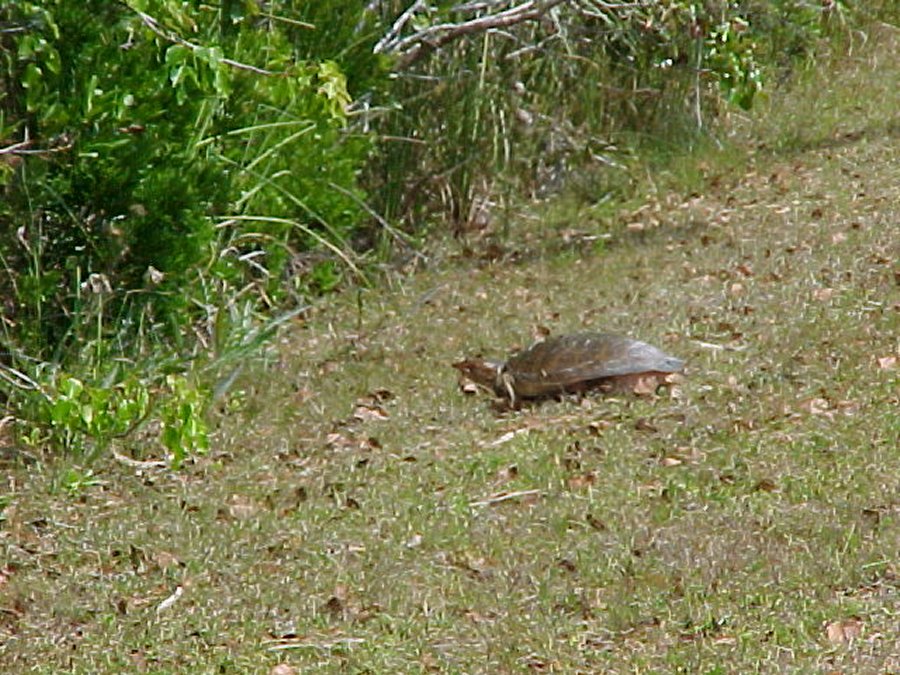
This is a turtle David backed up so Nancy could take his picture. |

Strangler Fig trees begin life perched in the canopy of a host tree, then grow descending roots which reach the forest floor and take root. Over time, these roots may completely enwrap the host tree, shade out its sunlight, and successfully take its place in the hammock. |

This is as close as we got to a Florida Panther. He left his foot prints in the mud. |
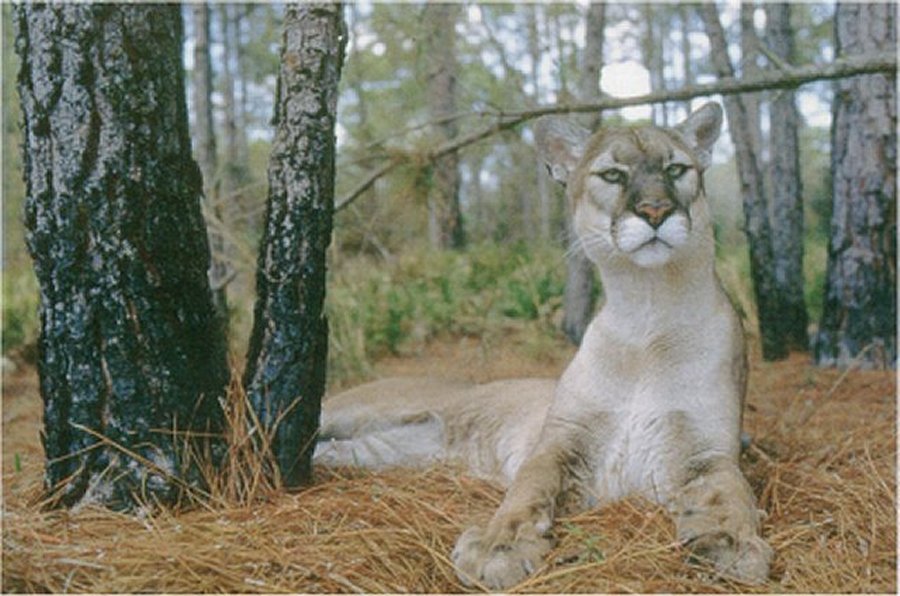
I found this picture of the endangered Florida Panther and scanned it in. |
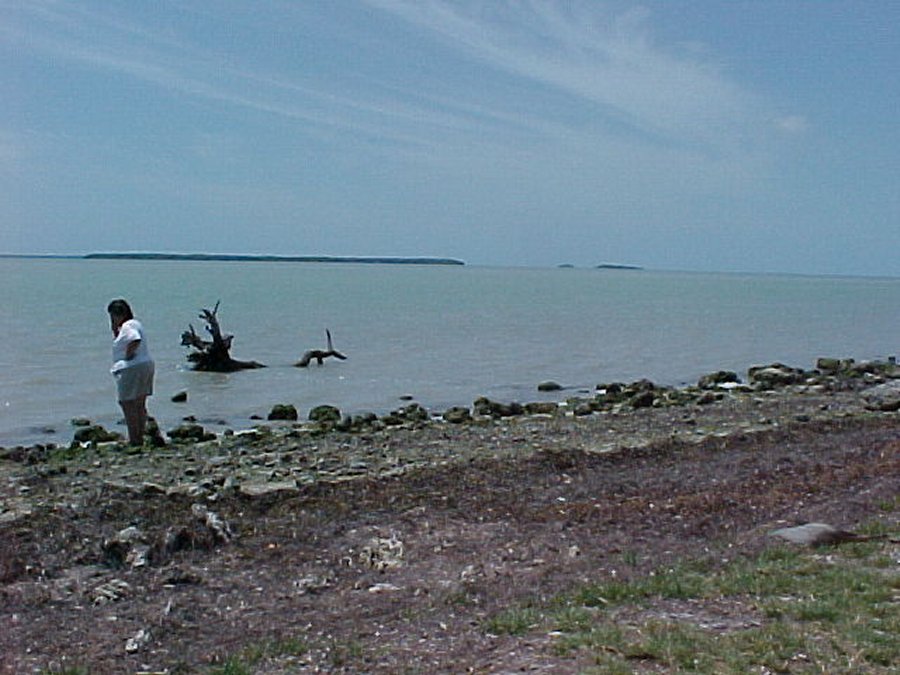
Shark River Slough empties here into Florida Bay in the Gulf of Mexico. |
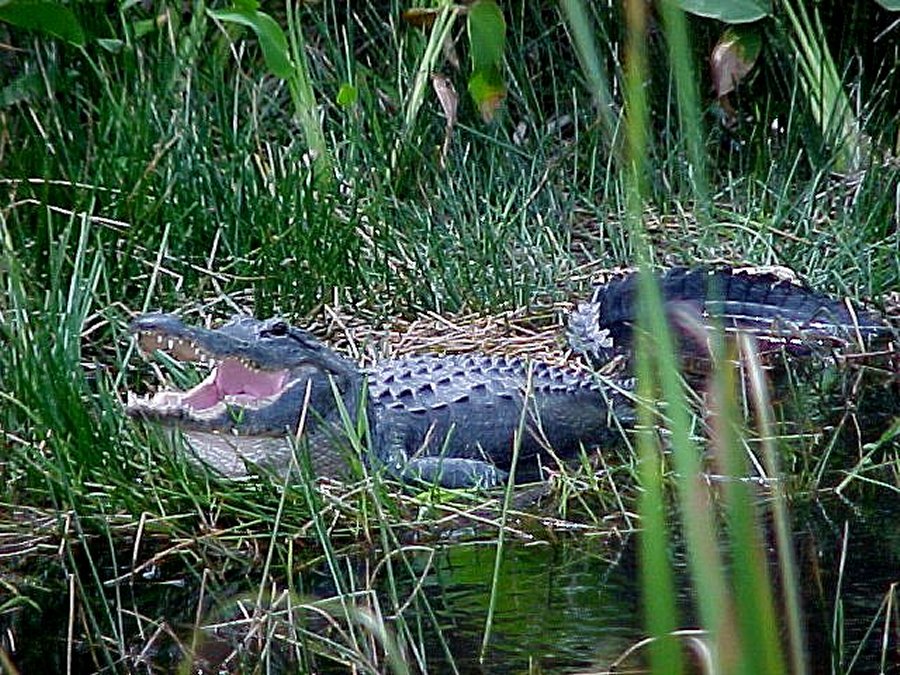
![]()

![]()
![]()